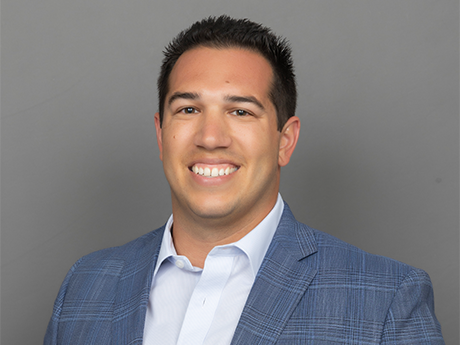Owning multifamily real estate isn’t just about consistent rental income, it’s a powerful tool for building long-term wealth. But here’s what many investors miss: Your property could be a gold mine of untapped tax savings that can significantly boost cash flow.
By using the right tax strategies, property owners can unlock thousands of dollars — sometimes millions — in deductions, freeing up capital that can be reinvested back into your portfolio for upgrades, new technologies, hiring staff and more. Two key strategies that can supercharge your savings are cost segregation and the 179D energy-efficiency deduction.
Cost Segregation
Cost segregation is an IRS-approved method of depreciation, focusing on accelerating the class lives of shorter depreciable assets within a building. By conducting an engineering-based study, specific building components are identified and reclassified into shorter tax life categories. This approach enhances deductions, allowing owners to claim more significant write-offs in the early years of ownership.
Without cost segregation, your entire multifamily property is placed on a 27.5-year depreciation schedule. But as any property owner knows, many of the components within your property won’t last nearly that long.
The IRS recognizes this and allows certain assets, like personal property and land improvements, to be depreciated faster. That’s where cost segregation comes in. Engineers inspect and reclassify every asset in your building using the modified accelerated cost recovery system to fit into shorter depreciation categories.
Here’s a few examples of common items that can be reclassified as five-year personal property: appliances, carpeting, decorative moldings, cabinets and countertops.
Fifteen-year land improvements can also include sidewalks, parking lots, landscaping, pools, sanitary lines and stormwater systems.
On average, 20 to 35 percent of a property’s cost basis can be reclassified into these shorter depreciation schedules. This doesn’t generate new depreciation but accelerates it, letting you take advantage of the time value of money by getting your tax benefit sooner. You’re creating a positive ripple effect when you couple this with bonus depreciation. Depending on when the property was placed into service, property owners can unlock significant first-year deductions with this combination.
Even if your property was placed in service years ago, there’s still potential to unlock tax savings. A look-back study can claim missed depreciation without amending your tax returns, essentially going back in time for savings. A cost segregation study can be conducted when a property has been newly constructed to maximize first-year tax savings for investors or owners.
For example, take a mid-rise building with 83 units with a depreciable basis of $7,256,192 placed in service in September 2022. Engineers reclassified 12.1 percent of five-year personal property and 8.1 percent of 15-year land improvements, leading to first-year deductions of $1,465,751. This figure is six times greater than it would be without the study.
Newly acquired properties can be great candidates as well. Take, for example, a highly amenitized Class A style complex with 370 units, placed in service in March 2024, with a depreciable basis of $41,237,120. Engineers reclassified 26.2 percent of personal property and 9.8 percent of land improvements, leading to first-year tax deductions of $8,907,218, eight times greater than without the study.
179D Energy Deductions
Section 179D of the Internal Revenue Code rewards property owners for making energy-efficient upgrades, offering up to $5 per square foot for qualifying improvements like lighting, HVAC systems and building envelope enhancements. Whether it’s a new build, renovation or expansion, it’s Uncle Sam’s way of saying, “Thanks for going green — here’s a tax break.”
For multifamily properties, the 179D deduction applies to buildings with four or more stories above grade, determined by several factors assessed by a licensed engineer. For construction projects starting after Jan. 30, 2023, compliance with federal prevailing wage and apprenticeship requirements are essential to unlock the full deduction of $5 per square foot. Without meeting these requirements, the deduction is capped at $1 per square foot.
Repair Regs
Section 162 of the Internal Revenue Code, known as tangible property regulations, or “repair regs,” allows business owners to deduct expenses related to repairs, materials, maintenance and supplies.
In 2014, the repair regs clarified the long-debated issue of capitalizing versus expensing property improvements in the accounting world. These guidelines introduced two key provisions for improvements: the betterment, adaptation and restoration (BAR) assessment and partial asset disposition (PAD).
The BAR assessment allows owners to classify enhancements that improve condition, functionality or efficiency as capitalized improvements, which can lead to immediate deductions. Betterments (upgrades), adaptations (modifications for new uses) and restorations (major repairs) fall under this category.
By qualifying improvements under the BAR criteria, property owners can unlock immediate deductions rather than capitalizing.
When a property component is replaced like equipment, HVAC or flooring, the undepreciated value of the old asset can be written off, including any expenses with removal through a PAD study.
Think of it as allowing the old, discarded portion of the building to contribute to your tax savings rather than being left on the books. Timing is important with this strategy as it can only be allocated in the year the assets are replaced.
The best part of all is that these strategies can be stacked and planned. Both a cost segregation and a 179D study can be applied on the same property to maximize benefits for property owners and investors.
Sean Lichterman is a regional director at Capstan Tax Strategies, where he works closely with real estate owners and their CPAs to optimize tax efficiencies. He can be reached at [email protected].


